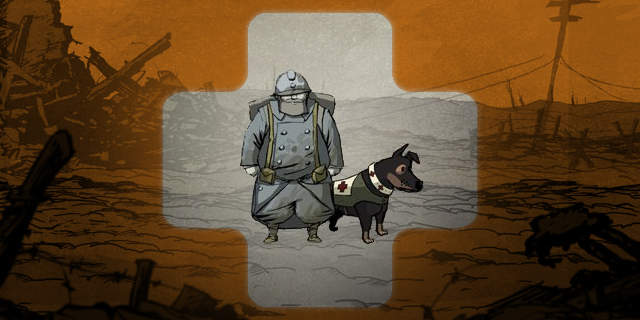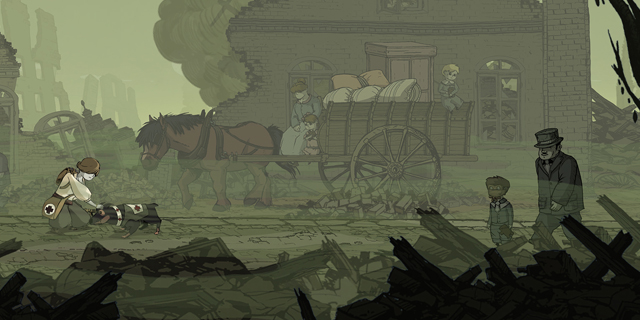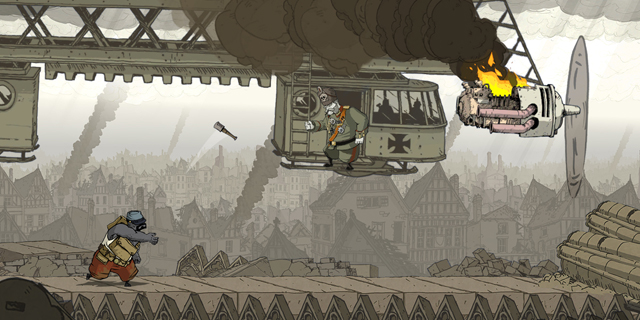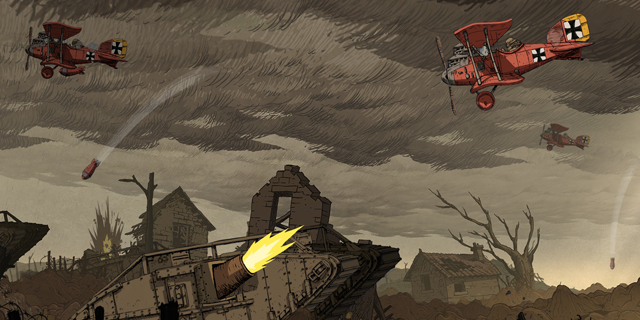
When attempting to recreate historical events in video game form, few actually succeed, often relying on a base understanding of history in order to provide a well-rounded experience appealing to a broader audience. These games seemingly sacrifice accuracy for entertainment and potentially lose something in the process. Ubisoft’s Valiant Hearts is a title that surprised me for a multitude of reasons, but its focus on utilizing historical facts in an otherwise-fictional representation of World War I is what stood out to me the most, creating an experience that felt authentic despite its cartoonish exterior.
I’ve talked plenty about how amazing Valiant Hearts is despite some shortcomings, but outside of its excellently crafted story, there is a surprising amount of history to learn. Each section comes complete with historical facts which relate to the specifics of what’s happening in the game. On top of that, there are plenty of collectibles to gather, each with their own piece of history attached to them as well. I’m still not the biggest fan of collectibles, but the information provided from these small trinkets made finding them more rewarding than usual.

This is because Valiant Hearts respects the place in history it represents. It tells a very specific story, one that feels perfectly aligned with World War I, but doesn’t rely too heavily on the war itself. It’s a backdrop, one that, at times, heavily influences the outcome of the story, but is almost never the focus. Despite that, the developer managed to find a way to incorporate its history without forcing the player to participate. It’s all entirely optional, yet adds a layer of legitimacy to the whole thing.
If you’ve played as many World War II video games as I have, you know that the setting isn’t really too important in the grand scheme of things. As much as I love the first few Medal of Honor games and their recreations of famous battles during the war, you never learn anything about the setting. You’re a participant, but you’re only there to shoot the enemy and run to the next objective. By focusing so much on the war as set decoration, it fails to honor those battles as well as that place in time.

Don’t get me wrong, the original Medal of Honor is a classic, as is Call of Duty and a number of other WWII shooters from that era, but playing through Valiant Hearts made me realize just how easily a piece of entertainment can also double as a learning experience without altering much of its core. Not every game based in history requires these small background elements, but it grants the player the choice to potentially learn something new while still having fun.
In truth, the correlation between a game like Valiant Hearts and your average WWII FPS isn’t the best to make, because you can’t accurately compare the gameplay. As I’ve said in my review, Valiant Hearts wouldn’t work as a shooter; it succeeds because of its approach as an adventure game. Despite that, even if almost everything about these two types of games differs, the potential to better incorporate little bits of history without bogging down the core of the experience is still present. You reward the player with a history lesson, and because of the setting, it fits in perfectly with what’s happening on screen.

I can’t claim to be a WWI expert now, but those little nuggets of information helped shape my perspective on the events of Valiant Hearts and possibly even made the story more impactful as a result. It made me think about other games and how they can find new ways to best tie in whatever is happening on screen with the history of what actually happened, providing the necessary angle to best appreciate whatever it is you might be doing.
If anything, Valiant Hearts’ reverent take on WWI and the events that inspired its story made me appreciate just how much thought and care went into the game. It’s not something you often see from big studios, making these rare occasions feel that much more poignant as a result.



















